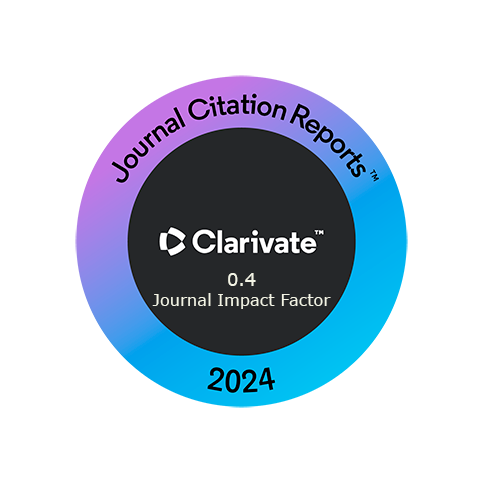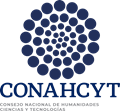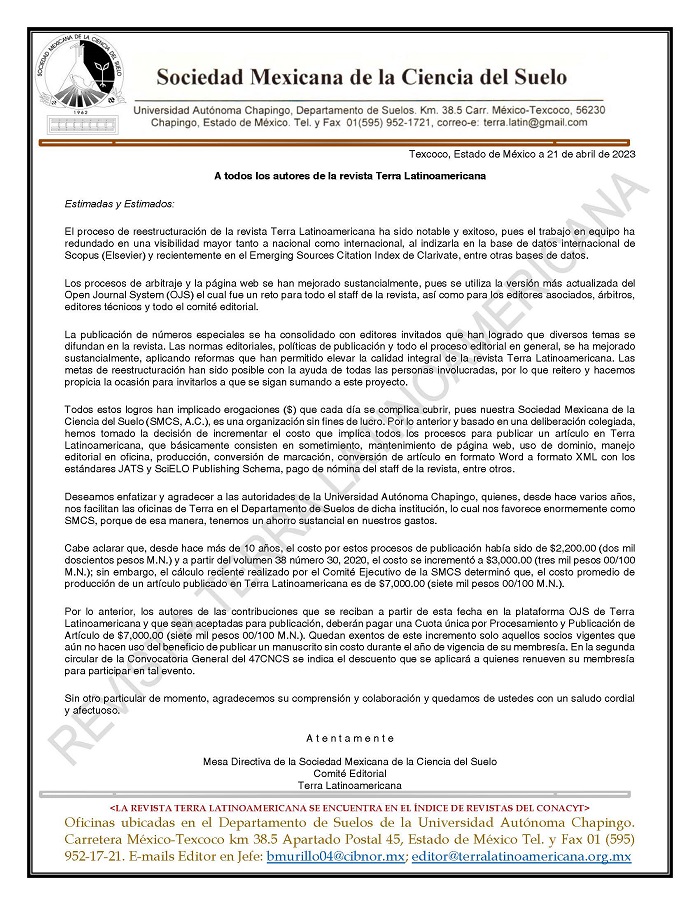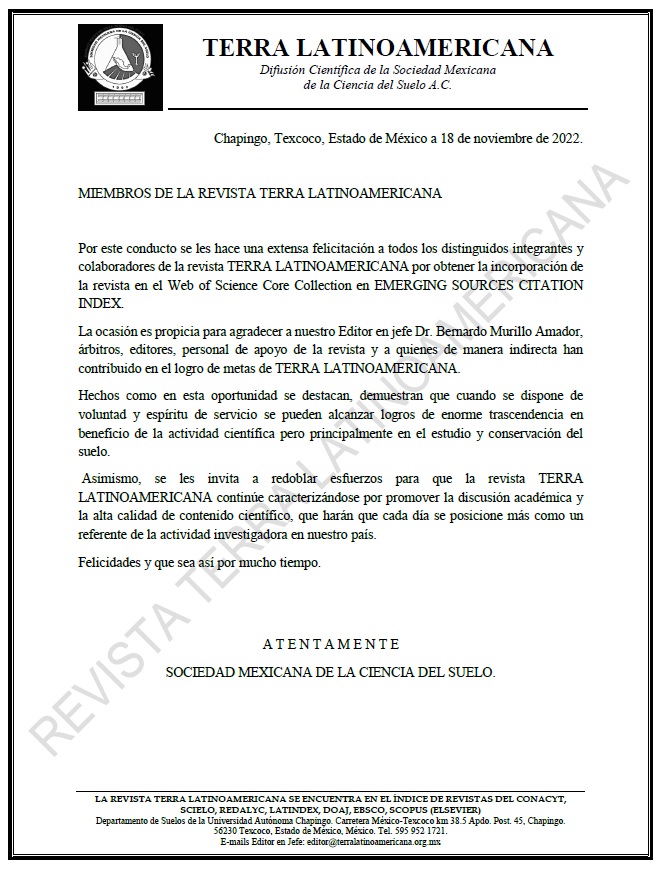Microbial activity and microbial biomass in coffee soils of the Venezuelan Andes
DOI:
https://doi.org/10.28940/terra.v36i1.257Keywords:
soil biological indicators, basal respiration, microbial quotient, microbial efficient quotientAbstract
In Venezuela approximately 200 000 ha are planted with coffee (Coffea arabica L.) mostly on the steep slopes of the Andes. Traditionally, coffee is cultivated with few or no agrochemical inputs in an agroforestry system, cropped under the shade of tree species of the leguminous family and other bushes. In recent years, with adoption of high yielding, early varieties of short stature, coffee is being produced in full sunlight with addition of mineral fertilizers and pesticides. The soil microbiological properties especially those related with the fluxes of energy and nutrient cycling, respond promptly to changes in soil conditions, often much earlier than organic carbon and, in this way, are early indicators of alterations in soil quality. In this study, we compared the microbiological activity (basal respiration), microbial biomass and derived ecophysiological ratios of topsoils (0-5 cm) collected from eight farms in the municipalities of Merida and Trujillo that practice traditional (agroforestry or shaded coffee), conventional (sun coffee or intensive monoculture) and organic (agroforestry or shaded coffee) production. The organic agriculture farms showed the highest contents of total organic carbon, water soluble carbon, basal respiration and microbial biomass compared with traditional and conventional farms. This means a more sustainable coffee system with better conservation of natural resources and environment-friendly production. On conventional farms, added fertilizers and pesticides negatively affect microorganism performance and are more inefficient in terms of carbon and energy use.Downloads
Publication Facts
Reviewer profiles N/A
Author statements
- Academic society
- Terra Latinoamericana
- Publisher
- Mexican Society of Soil Science, C.A.

















